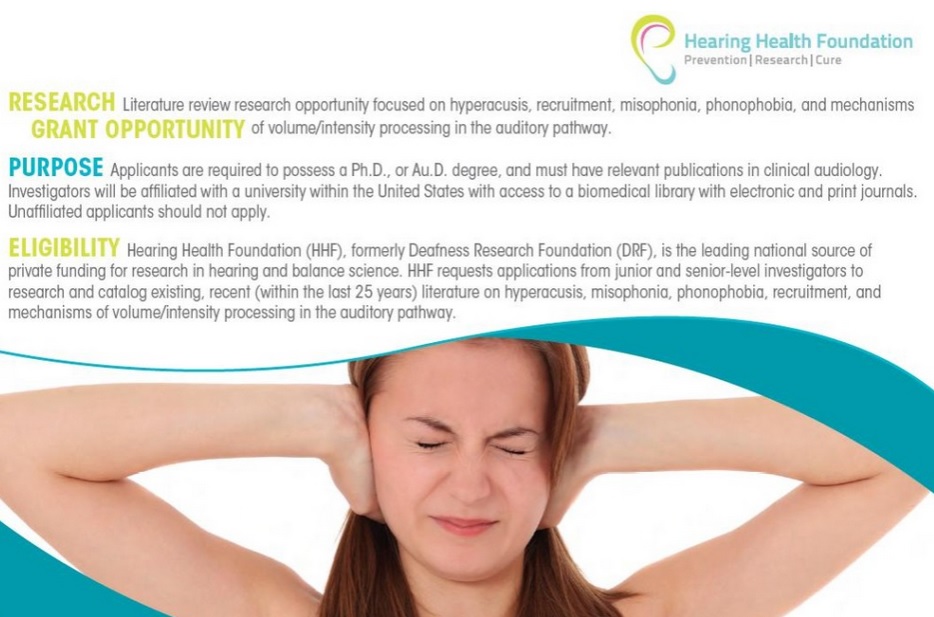Hyperacusis Research was excited to partner with the Hearing Health Foundation to administer a grant for a literature review focused on hyperacusis and mechanisms of volume and intensity processing in the auditory pathway.
There were several key objectives of the literature search. First, the goal was to provide definitions for each disorder (noting that there may be multiple definitions for a single disorder) and whether there is a prevalence among papers for specific definitions . Next the paper gives a comprehensive background to each disorder and gives examples of each condition. Finally the paper provides a proposed mechanism or demonstrated etiology.
The principal investigator for the grant was Dr. Richard S. Tyler from the University of Iowa, Department of Speech Pathology and Audiology, who partnered with Brian C. J. Moore to complete the work. We were excited about this choice as Dr. Tyler and his department at the University of Iowa has an outstanding 30 year history in tinnitus and hyperacusis research. He was the first to show that tinnitus patients often have hyperacusis. Dr. Tyler completed the review and a preliminary version is available in the American Journal of Audiology in two parts: Part 1 – Definitions and Manifestations, Part 2 – Measurement, Mechanisms, and Treatment.
For more details on Dr. Tyler see his website at the University of Iowa. Click here to read an article on Involuntary Volume in the Hearing Health magazine which highlights the grant.
Why do a Literature Review?
For researchers, this literature review effort is a vital initial step when attempting to move a research effort forward that has faced significant challenges in making breakthrough discoveries. The time spent getting an up to date published summary is essential for ensuring the next efforts we fund are headed in the right direction and not redundantly covering ground others have already investigated.



I have read a lot about tinnitus and was frustrated that I have the “ringing” (I hear crickets & cicadas) but it is more than that. My ears have always been sensitive to high pitched noises. I carry ear plugs and have ear muffs I wear for really noisy places. I have never abused my ears. More and more sounds and vibrations are setting my ears off. They hurt all of the time. They just feel raw. I seriously thought I was losing my mind until I found hyperacusis. It is not good news but at least I know I am not alone. I am willing to try anything to feel normal or at least more normal. I don’t want to go anywhere or be around people.